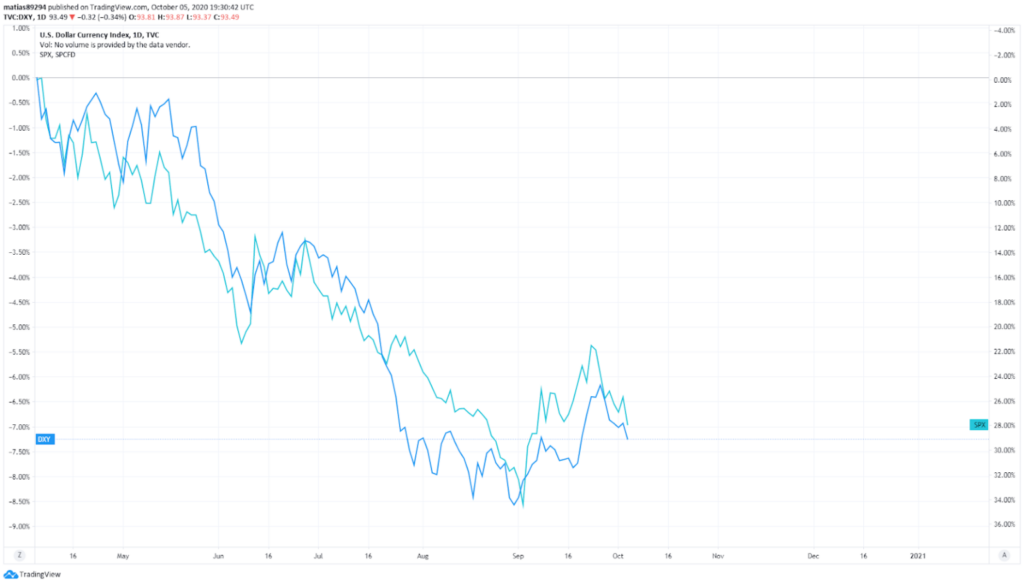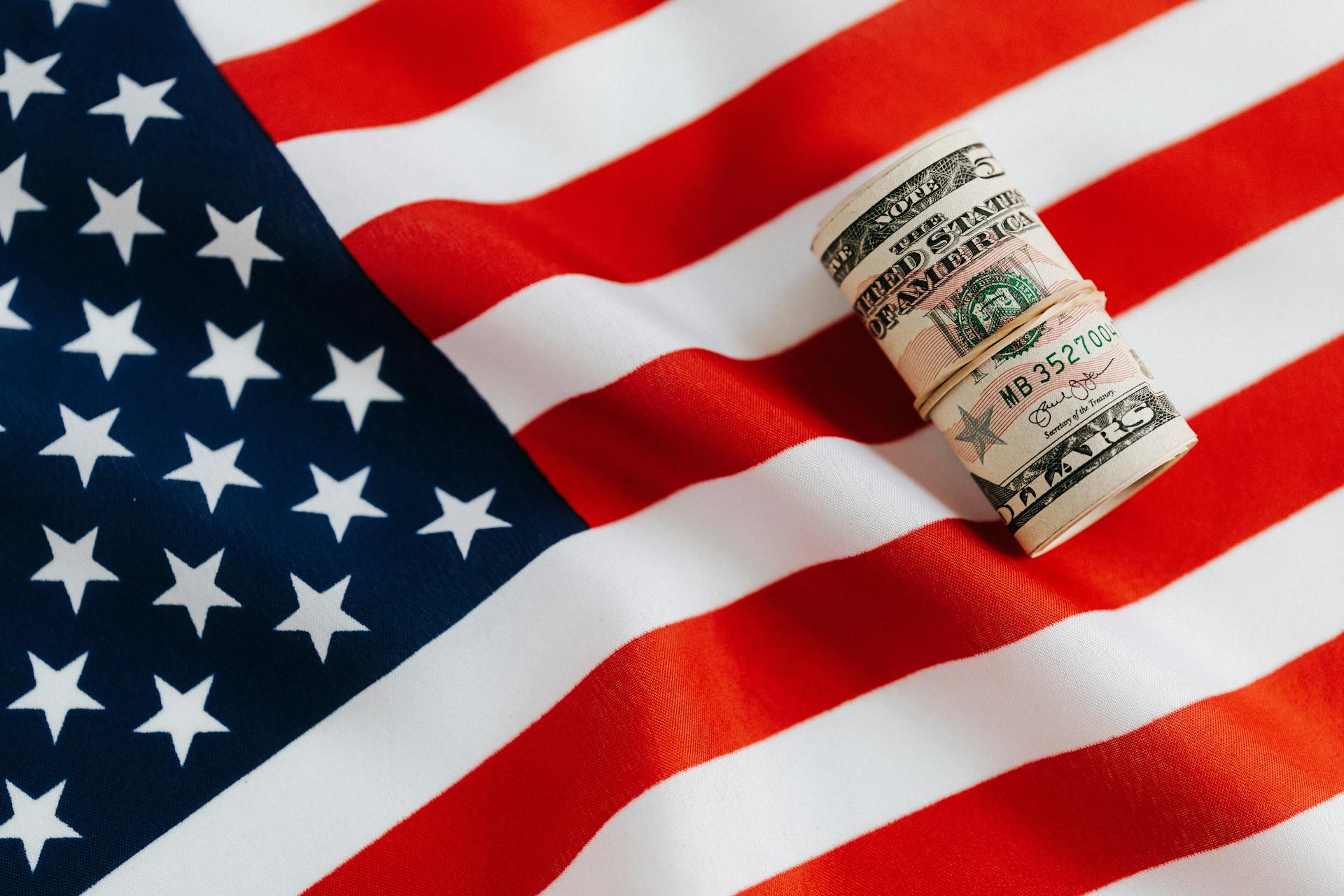The US dollar is still seen as a safe-haven. The recent appreciation has lost strength as equity markets across the globe recovered ground. Many analysts suggest another wave of risk aversion could trigger a rally of the US dollar. However, the intensity is not uniform across the board. Some currencies are likely to drop at a fastest pace while others might benefit. The worst positioned might be emerging market currencies while the yen should be the biggest winner.

DXY and SP500 (inverted)
The recent decline of the US dollar (measured by DXY) took place amid a rebound in equity prices (S&P 500) as seen in the chart. Analysts at ANZ point out that markets rose on expectations of a Biden victory in US Presidential elections. “The market is looking for a steeper curve, stronger growth and faster return of inflation under the Democrats as they favour much larger deficit spending than the Republicans. A faster US recovery would be good news for the global economy, especially against the stimulus planned for the euro area economy next year. This global assessment helps to explain the recent weakness in the USD, which is also being influenced by more optimistic expectations around the EU-UK trade talks, which have now entered an intense two-week negotiating period to see if the deadlock can be broken.”
At Danske Bank, market analysts note that if the global recovery gains traction – from a vaccine, Fed actions that could drive inflation higher and/or more fiscal stimulus – the US dollar could weaken more than expected. On the flip side, they warn that “if the world slips into a ‘classical recession’ e.g. due to ‘more of the same’ that has hit sentiment in recent weeks, China re-starts deleveraging and/or the US surprises positively and decouples from the rest of the world, the broad USD could strengthen again.”
Going forward, a recovery in risk appetite could continue to favor the recent pullback of the US dollar, but it is unlikely to send it to fresh monthly lows. “Looking ahead we expect continued concerns about COVID-19 related restrictions combined with US election uncertainty and ongoing US/China tensions to maintain a constraint on risk appetite,” says Rabobank analysts. A restrained improvement in market sentiment also would likely limit the depreciation of the greenback.
For the next months, the US election presents a critical risk factor. “Regardless of the election victor, we believe that fundamentals for the USD will remain unsupportive medium term. However, we see the possibility of a short term USD rally around the election period in the event of a disputed election result, likely driven by short squeeze,” mentions CitiBank analysts in their weekly report.
USD vs emerging market currencies
Buying the greenback against emerging markets (EM) currencies is probably the best way to play the dollar’s strength in the case of risk aversion. Many currencies of this group have outperformed over the last weeks, while others remain under pressure, weighed by domestic factors. The Turkish lira (TRY), the Brazilian real (BRL) and the Russian ruble (RUB) lost around 4% versus the US dollar over the last 30 days. Another sell-off in these currencies has the potential to take down other peers like the South African rand (ZAR) and the Mexican peso (MXN).
On Monday, the MXN rose to the highest level in two weeks versus the US dollar, approaching September peak. Domestic risk factors for the peso appear to be on the rise but not yet on the surface. The US election also poses a particular risk to Mexican assets in both directions. Essential support is again Banxico’s rate. The central bank cut the policy rate by 25 basis points at their last meeting, and not 50 basis points as it was doing. The end or a more gradual easing cycle means that Mexico will continue to have one of the highest rates among EM, making Mexican assets more attractive and therefore supporting the peso.
Mixed expectation about USD
Institutional reports are split regarding what the US dollar could do in the short-term. Where they practically all agreed, is that it should rise in a risk aversion environment. “Even if a fiscal stimulus deal is reached, the political uncertainty after Trump’s COVID infection and potentially tighter COVID restrictions will keep US equity markets fragile and continue to provide support for the dollar,” argue analysts at MUFG Bank.
The greenback could continue to move without a clear direction, playing the range without making fresh monthly tops or lows until equity markets show a more decisive direction.













